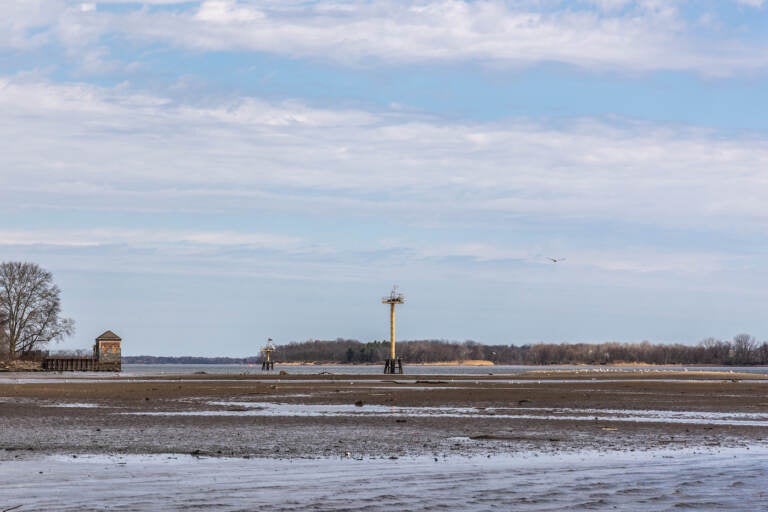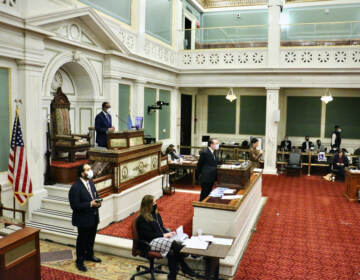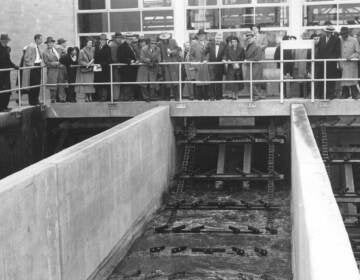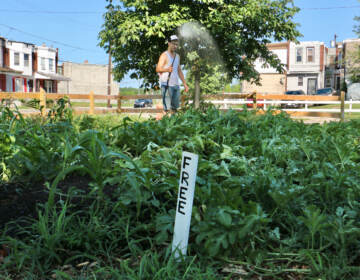Climate change could impact the Philly region’s water supply. New storage options may help
Climate change could mean droughts and changing water flow in the Delaware River. Water regulators say new storage facilities could help mitigate future water scarcity.

Marshland on the shore of the Delaware River south of the Samuel S. Baxter Water Treatment Plant in Philadelphia. (Kimberly Paynter/WHYY)
This story is part of the WHYY News Climate Desk, bringing you news and solutions for our changing region.
From the Poconos to the Jersey Shore to the mouth of the Delaware Bay, what do you want to know about climate change? What would you like us to cover? Get in touch.
Climate change could impact future water supplies in the Delaware River watershed, and regional planners want to be prepared.
The Delaware River Basin Commission, which oversees water quality and quantity for the 13 million people who depend on the river for drinking water, says protecting supplies is crucial.
While no imminent threat exists, the agency is exploring new storage options if a climate emergency, such as a severe drought, were to occur.
“Storage projects can take decades to develop,” Chad Pindar, DRBC’s manager of water resource planning, said. “So we wanted to make sure our commissioners had a head start if they decided we needed storage.”
The commission currently owns storage within two U.S. Army Corps reservoirs in the Lehigh River and Schuylkill watersheds.
Last week, the DRBC published a new study, Evaluation of Additional Storage in the Delaware River Basin, which weighs options for additional freshwater storage to prepare for climate adaptation, drought, and changes in water flow. The commission contracted Mott MacDonald and GEI Consultants to complete the study.
“Some of the drivers for [pursuing additional storage] may be increased water use. It could be the change in precipitation patterns,” Pindar said. “Our basin relies on snowpack. With climate change, we may have less snowpack available, and so the hydrologic cycle in the basin might change.”
George Guo is a professor of civil and environmental engineering at Rutgers University who specializes in water resources and environmental engineering. He called the DRBC study “very comprehensive.”
Guo said worsened water quality could also spark the need to evaluate alternative water storage options. Sea level rise can trigger saltwater to intrude surface water or groundwater and impact water quality, which may require increased releases from reservoir storage.
“When sea level is rising, you can release more freshwater to hold back the saltwater intrusion,” Guo said.
The study evaluated several options to store water. Those included the expansion or construction of a new reservoir, which the commission finds could have environmental impacts, including changes to habitats.
The commission also could seek out abandoned coal mines in Schuylkill and Carbon Counties. However, water quality varies from location to location and could require the use of treatment systems.
There are also thousands of quarries in the basin that could be utilized. In that case, water would need to be pumped in from an adjacent water body and pumped out when needed. That’s quite different from current storage, where dams impound water, which is then released by gravity.
There’s a lot of unanswered questions about what the future holds, Pindar said. In the Delaware River Basin, the flood of record and the drought of record occurred in 1955 and 1962 to 1967, respectively.
“What we’re trying to figure out is, with a repeat of the drought of record, is there enough water? But then also, if that drought of record might be changed by climate change, is there enough water?” Pindar said.
A separate study published early this year found there is enough groundwater in the Delaware River Basin to last at least until 2060.
WHYY is your source for fact-based, in-depth journalism and information. As a nonprofit organization, we rely on financial support from readers like you. Please give today.







